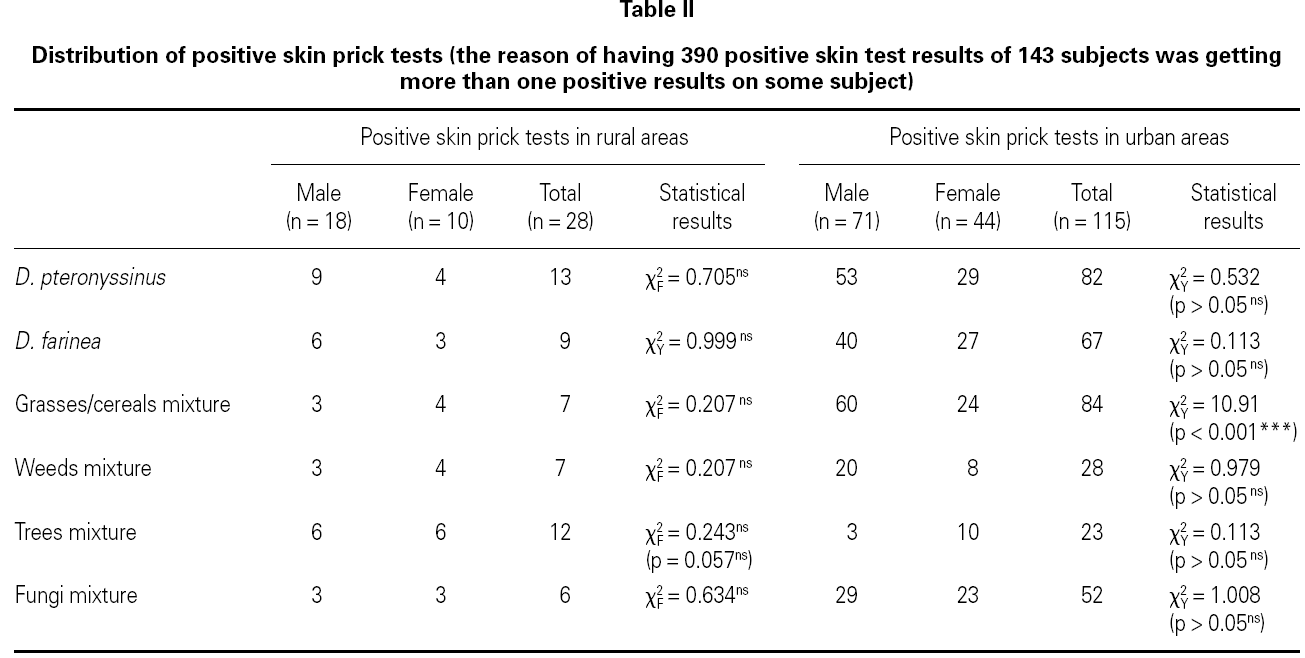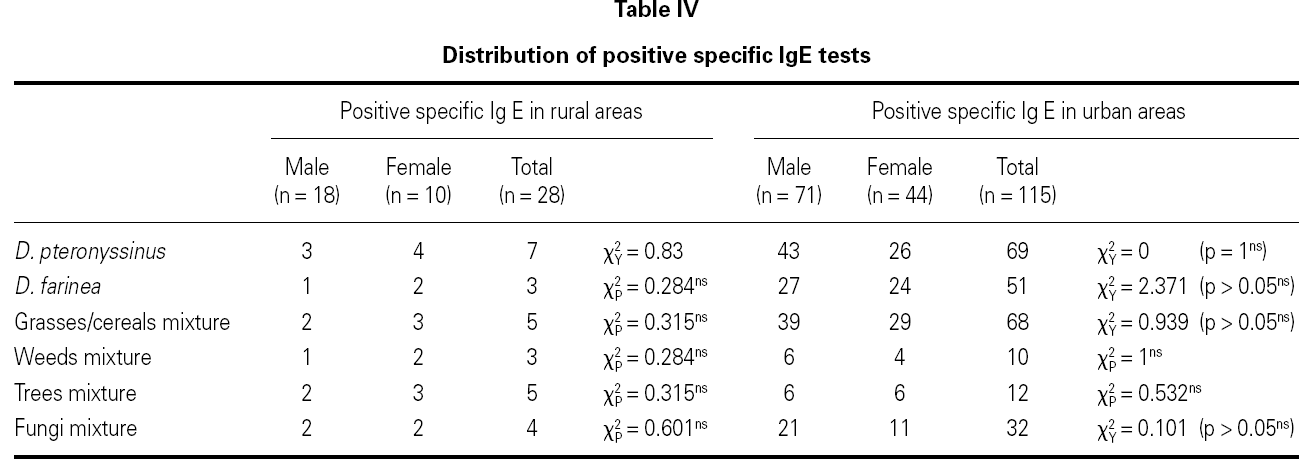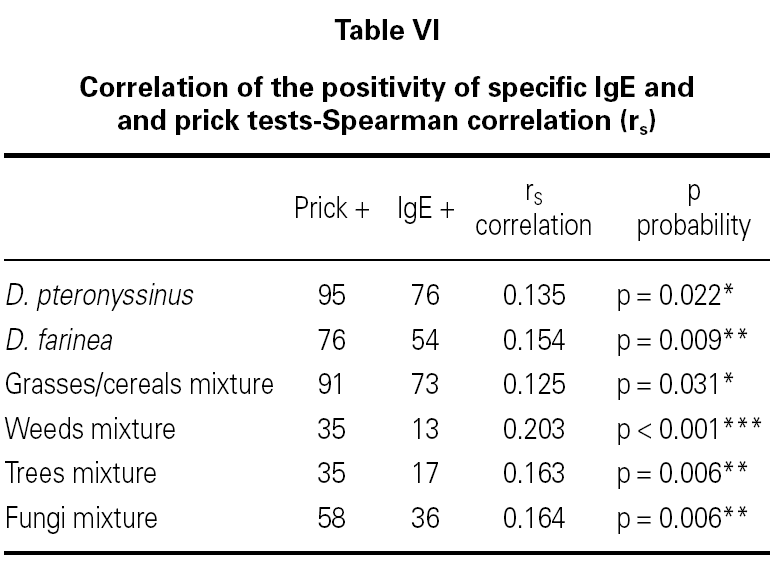INTRODUCTION
Our country has a diverse large spectrum of geographic and climatic conditions. The altitude varies from sea level to 5000 meters. This creates a great variety of flora and fauna. It is also a developing country, creating in turn, a great dissimilarity of the urban and rural areas. Allergic rhinitis is the most common allergic disease in Turkey. The epidemiology of allergic rhinitis varies according to the geographic regions of the country. The aim of this study is to find out if it also differs in urban and rural areas of the same region. The air pollution is very high in city center, whereas the country side has large agricultural fields. In addition the residential characteristics of these areas are quite different than each other. To determine the prevalence of allergic rhinitis, we assumed high school students as the most convenient group to reach in rural areas. Every individual comes from different families that are living in different conditions. Some are living in mountain villages with a settlement of less than 100 inhabitants; some are living in primitive cottages inside the forest. Both of them are kilometers away from industrial regions or city pollution. This brings the alteration of indoor allergens besides the outdoor ones. Although there is a significant increase in the prevalence of allergy in all over the world, no common factor underlying the increase has yet been identified 1-4. This study may lead the data to clarify the cause of the increase or to compare the prevalence with further surveys of this area.
MATERIALS AND METHODS
In order to compare the prevalence of allergic rhinitis the numbers of high school students in both regions were determined. Initially, a study group of 350 students was randomly selected among 3837 high school students living in small towns or villages in rural areas and attending local schools. The nearest school was almost 35 km far from the city and the industrial region of Eskisehir. Afterwards a second group of 850 students were selected in city center of Eskisehir following the same age and sex distribution of the first group among 8632 students. A similar ratio (approximately 10 %) was reached in sampling. This ratio represents the groups significantly.
One thousand two hundred students aged 14-16 years participated in this study. All the evaluations were performed in September and October in order to be out of allergy season. The screening questionnaires about allergic rhinitis were responded by the students at school, so a final response rate of 100 % was achieved. Then the questionnaires were evaluated. The diagnosis of self-reported allergy was based on a positive response to any one of the four questions. Seven hundred eighty-three students who had a positive questionnaire outcome were invited to an ENT examination. Then skin tests and blood analysis were performed to two hundred forty-six students who were diagnosed as allergic rhinitis clinically. The study flow was given in table I.
QUESTIONNAIRES
A standardized questionnaire defined by the European Community Respiratory Health Survey was used 5. Further questions related to symptoms of allergic rhinitis and to the residential characteristics of the subjects were also added. A diagnosis of self-reported allergic rhinitis was based on the question "Do you have nasal allergies, including hay fever?" Or "Do you have itchy or stuffy nose or sneezing during summer months?" Questions on nasal symptoms were: "When you are near animals, such as cats, dogs or horses, or near feathers, including pillows, quilts or duvets, or in a dusty part of the house, do you ever get a runny or stuffy nose or start to sneeze? When you are near trees, grass or flowers, or when there is a lot of pollen around, do you ever get runny or stuffy nose or start to sneeze?" 1.
Residential characteristics were evaluated with further questions: Distance to industrial area, highway, and forest? Do you live in a one family house/ apartment building?
Do you usually have dampness inside the house, or on the walls? Parental allergy was defined as affirmative answer to the question: Did your mother or your father ever have eczema, skin or nasal allergy or hay fever? 1-5.
Skin prick tests (SPT)
Skin tests were performed with multi test II applicators that have 8 units (Lincoln Diagnostics). Six common allergens (Dermatophagoides pteronyssinus, Dermatophagoides farinea, grasses/cereals mixture, weeds mixture, trees mixture, fungi mixture) positive and negative controls were included to all tests. The allergens used were from Allergopharma, Germany.
Blood sampling and analysis
Blood samples were taken and stored in a cooler during the examinations. They were transported to the laboratory later in the day. Levels of serum specific immunoglobulin Ig E and total IgE levels were determined. Specific IgE levels were determined by Flouroenzyme-Immunoassay (FEIA) (Pharmacia, Upjohn, Sweden) in the Clinical Microbiology Department Allergy Section of Osmangazi University Hospital, Eskisehir, Turkey. The specific IgE levels tested against Dermatophagoides pteronyssinus, Dermatophagoides farinea, grass mixture, weeds mixture, tree mixture, and fungi mixture.
Statistical analysis
Pearson chi-square, (x2P), Yates chi-square (x2Y, continuity correction), Fisher's exact test (x2F), Z test (normal approximation) were used in statistical analysis. Analyses were performed by SPSS 11.0. We used p # 0,05 for statistical significance level. Spearman correlation analysis (rS) was used for prick test and IgE correlation 6.
RESULTS
The first group of subjects was from rural areas, 215 males and 135 females with an average age of 16. The second group had 520 males and 330 females with an average age of 16 (table I).
Of the 1200 questionnaires, the self reported allergic rhinitis was in 65.3 % (783/1200) of the subjects). The self reported allergic rhinitis was higher in urban areas. Of the 850 subjects living in urban areas 611 had positive questionnaires. The ratio was 71.8 % (611/850). In rural areas the prevalence of self reported allergy was 49 % (172/350). The difference in ratios was significant (Z = 5.4; p < 0,001). Clinical ENT examination revealed signs of allergic rhinitis in 186 subjects, or 30.4 % of the subjects (186/611) from urban areas. In rural areas the prevalence of clinically diagnosed allergy was 34.9 % (60/172). The difference in ratios was not significant (Z = 0,652; p > 0,105ns).
Prick test results was found to be positive in 61.8 % (115/186) in urban areas (71 males-44 females) and 46.7 % (28/60) in rural areas (18 males-10 females). The comparison of the ratios of urban and rural areas was significant (Z = 2.06; p < 0.05*). 390 positive skin prick tests were obtained of these 143 cases (28 + 115). The results of positive skin prick tests of both in urban and rural areas were given at table II. The reason of having 390 positive skin test results of 143 subjects was getting more than one positive results on some subjects. There was no statistically significant relation between sex and skin prick test positivity in both groups (table II). The incidence of positive skin tests in urban areas was significantly higher (table III).
Similar results were obtained in serum specific IgE analysis. The total number of positive specific IgE results was 269 (table IV).
The incidence of positive specific IgE tests in urban areas was significantly higher than rural areas (table V).
The correlation of specific IgE levels and skin prick test results was significant in all allergens (table VI).
DISCUSSION
Allergic rhinitis is very well known, as are its causes and symptoms. There is considerable evidence that the prevalence of self reported respiratory allergy has increased over recent decades. It has been discussed whether this increase represents a true increase or is due to an increased recognition of allergic disease 3. It seems that both are true in our study with a 65 % positive answer ratio in our questionnaire evaluation. Furthermore, this ratio was higher than many other screening studies 2,3. The reason for the high positive response may be due to the group's younger age. The overall prevalence of self-reported allergic rhinitis reported by Olivieri et al was 15.9 % 2. But the subjects of that survey were all adults. In some other adolescent epidemiology studies parents completed the questionnaires 1. The screening questionnaires were responded by the students at school in order to achieve a final response rate of 100 %. Some positive answers may have been given in order to be checked by the visiting doctors group in their school. The 30.4 % ratio of clinically diagnosed allergy, in urban areas, versus the 34.9 % in rural areas seems to be more realistic. The incidence of positive skin prick test among these subjects was very high respectively (46.7 %) 28/60 in rural areas and (61.8 %) 115/186 in urban areas.
A higher incidence of allergic rhinitis was diagnosed for students living in city center. This data is parallel with previous studies 1,2,4,7-9. In comparison to rural residents, the urban population had an increased risk of allergic rhinitis. The cause may be the higher level of air pollution. This may indicate the significance of pollution in the development of allergy.
It is well known that residential characteristics are of importance in the development of allergic diseases, especially in moulds. Better house insulation and tighter windows cause a subsequent increase in dampness and moulds 7. When we compared the existence of mould sensitization there was a statistically significant difference between urban and rural areas. The prevalence of allergies among East Germans after reunification was increased. This increase was not only related with moulds, but also exposure to emissions from gas cooking and environmental tobacco smoke, carpeting, and day care attendance 7. It was also proposed that outdoor air pollution from motor vehicle exhaust fumes played a role 8. A similar study was performed to compare the prevalence of allergic rhinitis and atopic sensitization between an eastern city (Erfurt) and a western German city (Hamburg). Although they were both urban areas, the prevalence of allergic rhinitis was higher in Hamburg in the 27-36 age group 7. This data was attributed to differences in lifestyle. In our study the difference in the lifestyle of two groups was much greater by all means.
Unlu et al investigated the prevalence of atopic diseases in Afyon which is located close to Eskisehir-Turkey. They found the cumulative prevalence of rhinoconjunctivitis 8.10 % 9. The study was done on secondary school students in urban areas.
Indoor pets are not so popular both in rural or urban in Turkey, so cats and dogs are not important allergenic factors for us. It was also reported that the indoor air and floor dust at the schools of the students do not contribute to allergic sensitization 10.
A comparative study between SPT and specific IgE levels was performed in Japan in infants with clinical relevance and evaluation by mothers. Concordance rate between these two parameters was 78.6 %. The correlation is significant in most of the allergens in our study (table VI). Mothers appreciated the SPT test and felt that quick results for multi-allergens were the greatest advantage of SPT. More than 90 % of the mothers wanted the allergic status of their next children to be evaluated with SPT. Especially, more than 30 % of the mothers preferred SPT than blood analysis of specific IgE as initial screening test 11. We support this idea in other aspects. The cost of blood analysis of specific IgE is very high and furthermore the availability of it is low in Turkey.
Allergic rhinitis is a medical and economic problem in various locations and further epidemiologic investigations should be performed.
















